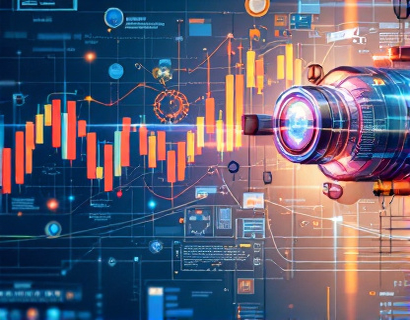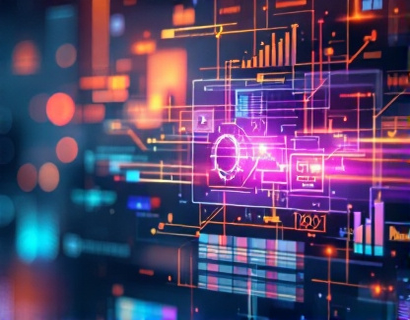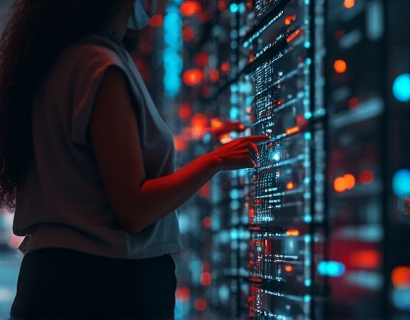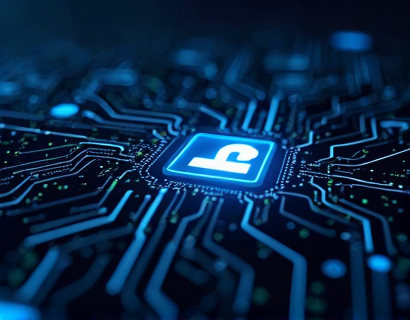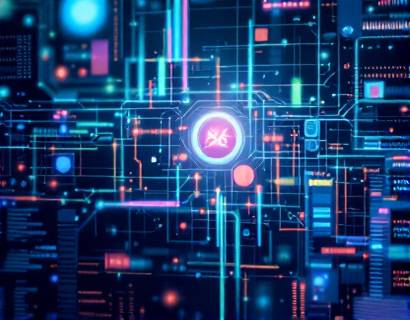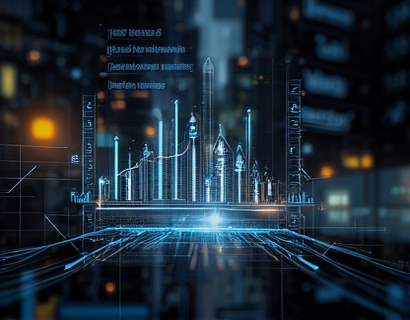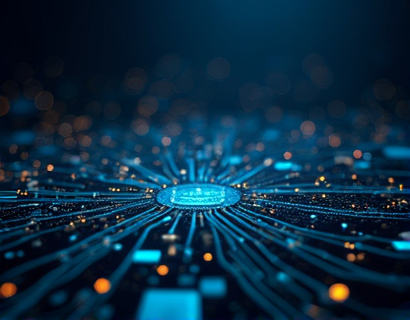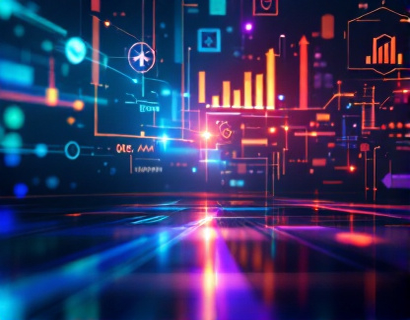Crypto and AI Power: Transforming Digital Engagement with Next-Gen Ucosystem Innovations
The intersection of blockchain technology and artificial intelligence (AI) is giving rise to a new era of digital engagement, characterized by enhanced security, unparalleled personalization, and innovative interactions. This transformative integration is not just a technological advancement but a paradigm shift in how we interact with digital platforms and services. For tech enthusiasts and professionals, understanding the dynamics of this fusion is crucial, as it holds the key to unlocking new possibilities in the digital landscape.
The traditional digital engagement models are being redefined by the synergy between blockchain and AI. Blockchain, with its decentralized and immutable ledger, provides a secure and transparent environment, while AI brings intelligence and adaptability to the table. Together, they create a powerful ecosystem that can revolutionize various aspects of digital interaction, from user authentication to content delivery.
Enhanced Security through Blockchain and AI
One of the most significant benefits of integrating blockchain and AI is the substantial improvement in security. Blockchain's inherent properties, such as decentralization and cryptographic hashing, make it an ideal foundation for secure transactions and data storage. However, the dynamic nature of AI adds an extra layer of security by enabling real-time threat detection and response.
AI algorithms can analyze vast amounts of data to identify patterns and anomalies that may indicate security breaches. For instance, machine learning models can monitor network traffic and user behavior to detect and prevent fraudulent activities. This proactive approach to security is a significant upgrade from traditional methods, which often rely on predefined rules and signatures that can be easily bypassed by sophisticated attacks.
Moreover, the use of smart contracts on blockchain platforms ensures that transactions are executed only when predefined conditions are met. AI can optimize these smart contracts by dynamically adjusting the conditions based on real-time data, further enhancing the security and reliability of the system. This combination not only protects user data but also builds trust in digital platforms, encouraging more widespread adoption.
Personalization at Scale with AI and Blockchain
Personalization is a critical aspect of modern digital engagement, and the integration of AI and blockchain takes it to new heights. AI-driven algorithms can analyze user preferences, behavior, and context to deliver highly personalized experiences. However, the challenge lies in managing and securing the vast amounts of personal data required for such personalization.
Blockchain provides a decentralized and secure way to manage user data, giving individuals control over their information. Through blockchain, users can grant or revoke access to their data seamlessly, ensuring privacy and consent are maintained. AI, on the other hand, can process this data to create detailed user profiles, enabling highly tailored content and services.
For example, in the realm of entertainment, a streaming platform can use AI to recommend shows and movies based on a user's viewing history and preferences. By storing this data on a blockchain, the platform ensures that user information is secure and that the user has full control over who accesses it. This not only enhances the user experience but also complies with data protection regulations.
Innovative Interactions through AI-Powered Chatbots and Virtual Assistants
Interaction with digital services is becoming increasingly natural and intuitive, thanks to AI-powered chatbots and virtual assistants. These AI-driven entities can understand and respond to user queries in real-time, providing instant assistance and support. When integrated with blockchain, these interactions become even more secure and transparent.
AI chatbots can handle a wide range of tasks, from customer support to complex transactions. By leveraging blockchain, these chatbots can ensure that transactions are tamper-proof and that user data is protected. For instance, in financial services, a blockchain-based chatbot can facilitate secure and transparent transactions, reducing the risk of fraud and errors.
Furthermore, the use of NFTs (Non-Fungible Tokens) in conjunction with AI chatbots opens up new possibilities for unique and verifiable digital interactions. Users can own and trade digital assets, such as exclusive content or virtual items, with the assurance of authenticity and ownership verified by the blockchain.
Decentralized Identity Management
Identity management is another area where the combination of blockchain and AI is making a significant impact. Traditional identity verification processes are often centralized, vulnerable to breaches, and cumbersome for users. Blockchain-based identity solutions, enhanced by AI, offer a decentralized and user-centric approach.
AI can help in creating and managing digital identities by analyzing and verifying user attributes, such as biometric data and personal information. Blockchain ensures that these identities are stored securely and can be shared selectively. Users can prove their identity to different services without revealing unnecessary information, enhancing both security and privacy.
For instance, a blockchain-based identity platform can use AI to verify a user's identity through multiple sources, such as government databases and social media profiles. Once verified, the user can control which parts of their identity are shared with specific services, ensuring a balance between convenience and security.
Fraud Detection and Prevention
Fraud remains a persistent challenge in the digital world, affecting various industries from finance to e-commerce. The integration of AI and blockchain offers a robust solution to detect and prevent fraudulent activities. AI algorithms can analyze patterns and anomalies in real-time, while blockchain provides an immutable record of transactions.
By combining these technologies, platforms can identify suspicious behavior and take proactive measures to mitigate risks. For example, in the financial sector, AI can monitor transaction patterns and flag potential fraud cases, which can then be verified and acted upon using blockchain's immutable ledger. This not only reduces the incidence of fraud but also minimizes false positives, improving the overall user experience.
Moreover, the transparency of blockchain ensures that all transactions are visible and traceable, making it easier to investigate and prevent fraudulent activities. This level of transparency builds trust among users and stakeholders, fostering a more secure and reliable digital environment.
Content Creation and Monetization
The creative industry is also benefiting from the synergy between blockchain and AI. Content creators can leverage these technologies to protect their intellectual property, ensure fair compensation, and engage with their audience more effectively.
AI can assist in content creation by generating ideas, writing scripts, and even creating visual content. Blockchain, on the other hand, can ensure that creators receive fair credit and compensation for their work. NFTs play a crucial role here, as they can represent unique digital assets, such as artwork, music, or written content, with verifiable ownership and provenance.
AI-powered platforms can also help creators discover new audiences and monetize their content more effectively. By analyzing user preferences and behavior, AI can recommend content that resonates with specific audiences, increasing engagement and potential revenue. Blockchain ensures that transactions are secure and transparent, allowing creators to receive payments directly without intermediaries.
Conclusion
The integration of blockchain and AI is transforming digital engagement in profound ways, offering enhanced security, personalized experiences, and innovative interactions. As these technologies continue to evolve, their potential to revolutionize various industries and aspects of digital life becomes increasingly evident. For tech enthusiasts and professionals, staying informed about these developments is essential to harness their full potential and contribute to the next generation of digital innovations.



